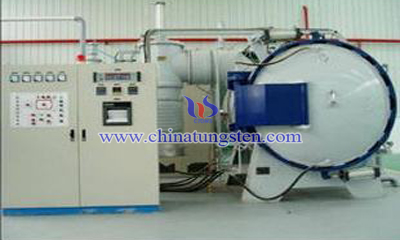Change of Sintering Process
- Details
- Category: Tungsten Information
- Published on Wednesday, 31 January 2018 22:18
Tungsten carbide sintering is a multicomponent liquid phase sintering. In the process of sintering, both physical and chemical changes will occur. Among these changes, the four important changes are densification of sintered body, change of binder phase composition, growth of tungsten carbide grain and formation of alloy structure.

Densification of Sintered Body
After sintering, the volume contraction of the block becomes smaller and the strength increases sharply as well. The porosity of the block is generally 50%, and the sintered product is close to the theoretical density, and the pore size should be less than 0.2%. After sintering, the line contraction is nearly 20%, and the volume contraction is about 50%. The strength of the pressed block is greater. After sintering, the products can meet the strength values that meet all kinds of harsh working conditions. Obviously, the product strength is increased by a much larger magnitude than that of the density.
Change of Binder Phase Composition
Eutectic reaction occurs when carbides (take WC as an example) are sintered with metal binder (take Co as an example). When the eutectic reaction is reached, the liquid phase appears, which always exists in the sintering stage. From room temperature to liquid temperature Solubility of WC in Co increases with the increase of temperature.
Grain Growth
When the tungsten carbide block is sintered, the growth phenomenon of the average grain size of carbide is called grain growth. For example, if the average grain size of the blank block WC is 0.1-1 m, the average grain size can be up to 1-2μm after sintering, Additionally, the grain growth and the dissolution of liquid phase are caused by the diffusion of solid phase.
- Tungsten Carbide Manufacturer & Supplier, Chinatungsten Online: tungsten-carbide.com.cn
- Tungsten News & Prices of China Tungsten Industry Association: www.ctia.com.cn
- Molybdenum News & Price: news.molybdenum.com.cn
- Tel.: 86 592 5129696; Fax: 86 592 5129797; Email: sales@chinatungsten.com



 sales@chinatungsten.com
sales@chinatungsten.com